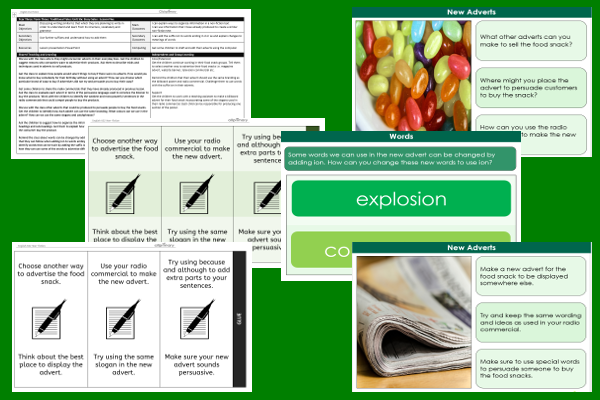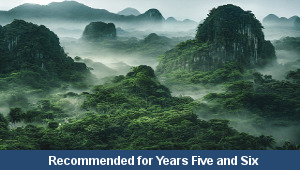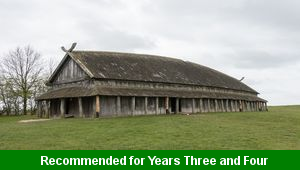Lesson Five – Food Snack Adverts

This English teaching pack for Key Stage Two gets the children to explore how to design and make some example adverts for radio commercials that can be used to sell a food snack based on branding from a traditional tale.
The class can practise using words with the suffix ion and the conjunctions because and although to compose sentences for their adverts.
Download this teaching pack including a lesson plan, classroom activities and an interactive presentation to explore how to design and make some example adverts for radio commercials that can be used to sell a food snack based on branding from a traditional tale
Activities in this teaching pack include a table display card to support designing and making some example adverts that can be used to sell a specific type of food snack in a radio commercial that is based on the characters and events in a traditional story.
The interactive presentation gets the children to explore how to design and make some example adverts that can be used to sell a food snack based on branding from a traditional tale.
This lesson is part of an English scheme of work to get the children to produce radio commercials and posters using persuasive language based on traditional stories, explore words with sion endings and use the conjunctions because and although to extend sentences. There are teaching activities for shared learning, differentiated worksheets to support independent learning and interactive presentations to introduce concepts and key skills.
-

Rainforest Conservation
Identify, illustrate and debate some of the different reasons as to how and why tropical rainforests should be protected and conserved for the future
-

New Start
Explore how to prepare for and deal with some of the new events and special occasions that someone might experience in life
-

Viking Settlement
Explore how the Vikings settled and built communities in Britain in the past by referencing their culture and traditions
-

Changing Seasons
Investigate changes that can happen to the natural world during the four seasons of the year and reflect on similar changes that can occur in people’s lives
